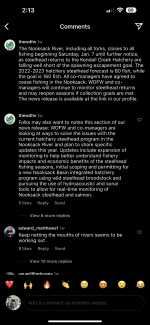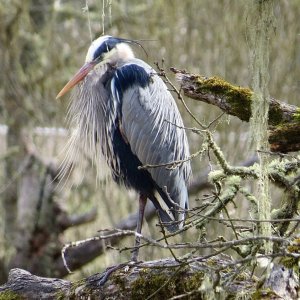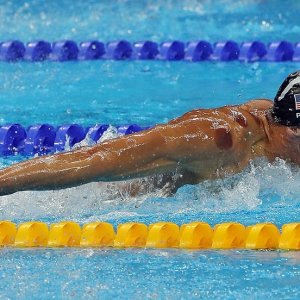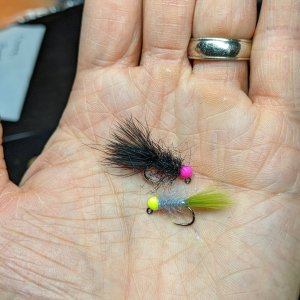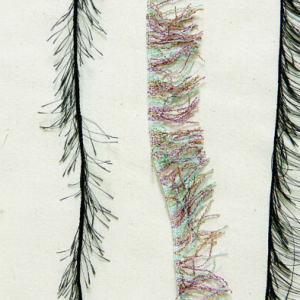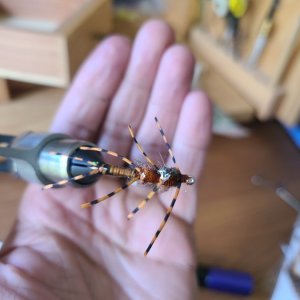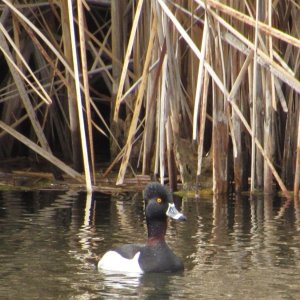charles sullivan
Life of the Party
In speaking with some fellow hamsters/ Whatcomites recently, a few questions came up. If possible, I think that @Cabezon @Smalma and @Salmo_g all may be able to provide some insight if you all choose. I am willing to pick up a check or two in appreciation of any thoughts. Like I always say, "She'll make more."
I am mixing a couple convo's here. I was only drinking during one of them so hopefully I can do this justice.
We were speaking of the failed Nooksack hatchery and how the genetics portion seems to be almost designed to fail given how they must operate. The thought being that keeping the requirement from the state hatchery management plan to only use hatchery broodstock from Nooksack hatchery fish creates an inevitable reduction in fitness. The reduction compounds itself with each successive generation. It seems to me that it's likely that the reduction in genetic diversity is caused by agressively selecting for early spawning fish. Diversity seems to increase population resilience. Nooksack hatch fish have become homogenous. Nooksack hatchery broodstock are as fragile as management egos.
No one in the group has a real strong grasp on epigenetics and its effect on fitness. My punnett square exercises from long ago did not speak to it, that for sure. Can anyone here speak to this? Can anyone explain what epigenetics are and their effect? I know only enough to be wrong.
Our discussion moved to a bit of a comparison between the current failed hatchery and the broodstock hatchery that had been run by the local steelhead club. I have only heard good things about that hatchery, at least anecdotally. I suspect @Smalma has a bit of knowledge on how that was run. I am curious as to what the basic differences are in how it was run compared to the current Kendall debacle. I suspect that a similar type hatchery would run afoul of the hatchery managment plan. Someone showed a WDFW post on the twitters teasing us with the idea via their own social media. They were also speaking about cooperating with the Nooksack tribe. If they partnered with a tribal entity, would that be a way to have a native broodstock hatchery? The tribes can't be held to the same standard as WDFW when designing and operating a hatchery right? They would not be required to follow WDFW's guidelines outlined in the hatchery management plan.
After working through our thoughts @Pink Nighty had the idea to try and reduce the fitness issues by transforming hatcheries and hatchery practices to reduce the epigenetic issues by more closely mimicking natural conditions. Seems logical. I can't think of any hatchery that has really tried to do this. My assumption is that this would be space and water intensive. I then I thought of the pinnacle of fisheries management called the Fulton spawning channel. It seems to be a great beginning to such a facility. With any luck we could avoid the resultant harvest impacts on wild fish, or we'll all be defending some steelhead crazed, chlorine dumping lunatic. Anyone have any idea if this would be feasible in any way? Has anyone else tried this sort of thing?
Does anyone know anything about WDFW's plans for a change in Nooksack hatchery practices?
I know.....that's a lot of questions. Time for a beer.
Thanks to anyone who answers any of my rambling questions. I know that there are a few more bio's that frequent here than the 3 that I tagged. We'd love to hear from you all too.
I am mixing a couple convo's here. I was only drinking during one of them so hopefully I can do this justice.
We were speaking of the failed Nooksack hatchery and how the genetics portion seems to be almost designed to fail given how they must operate. The thought being that keeping the requirement from the state hatchery management plan to only use hatchery broodstock from Nooksack hatchery fish creates an inevitable reduction in fitness. The reduction compounds itself with each successive generation. It seems to me that it's likely that the reduction in genetic diversity is caused by agressively selecting for early spawning fish. Diversity seems to increase population resilience. Nooksack hatch fish have become homogenous. Nooksack hatchery broodstock are as fragile as management egos.
No one in the group has a real strong grasp on epigenetics and its effect on fitness. My punnett square exercises from long ago did not speak to it, that for sure. Can anyone here speak to this? Can anyone explain what epigenetics are and their effect? I know only enough to be wrong.
Our discussion moved to a bit of a comparison between the current failed hatchery and the broodstock hatchery that had been run by the local steelhead club. I have only heard good things about that hatchery, at least anecdotally. I suspect @Smalma has a bit of knowledge on how that was run. I am curious as to what the basic differences are in how it was run compared to the current Kendall debacle. I suspect that a similar type hatchery would run afoul of the hatchery managment plan. Someone showed a WDFW post on the twitters teasing us with the idea via their own social media. They were also speaking about cooperating with the Nooksack tribe. If they partnered with a tribal entity, would that be a way to have a native broodstock hatchery? The tribes can't be held to the same standard as WDFW when designing and operating a hatchery right? They would not be required to follow WDFW's guidelines outlined in the hatchery management plan.
After working through our thoughts @Pink Nighty had the idea to try and reduce the fitness issues by transforming hatcheries and hatchery practices to reduce the epigenetic issues by more closely mimicking natural conditions. Seems logical. I can't think of any hatchery that has really tried to do this. My assumption is that this would be space and water intensive. I then I thought of the pinnacle of fisheries management called the Fulton spawning channel. It seems to be a great beginning to such a facility. With any luck we could avoid the resultant harvest impacts on wild fish, or we'll all be defending some steelhead crazed, chlorine dumping lunatic. Anyone have any idea if this would be feasible in any way? Has anyone else tried this sort of thing?
Does anyone know anything about WDFW's plans for a change in Nooksack hatchery practices?
I know.....that's a lot of questions. Time for a beer.
Thanks to anyone who answers any of my rambling questions. I know that there are a few more bio's that frequent here than the 3 that I tagged. We'd love to hear from you all too.

